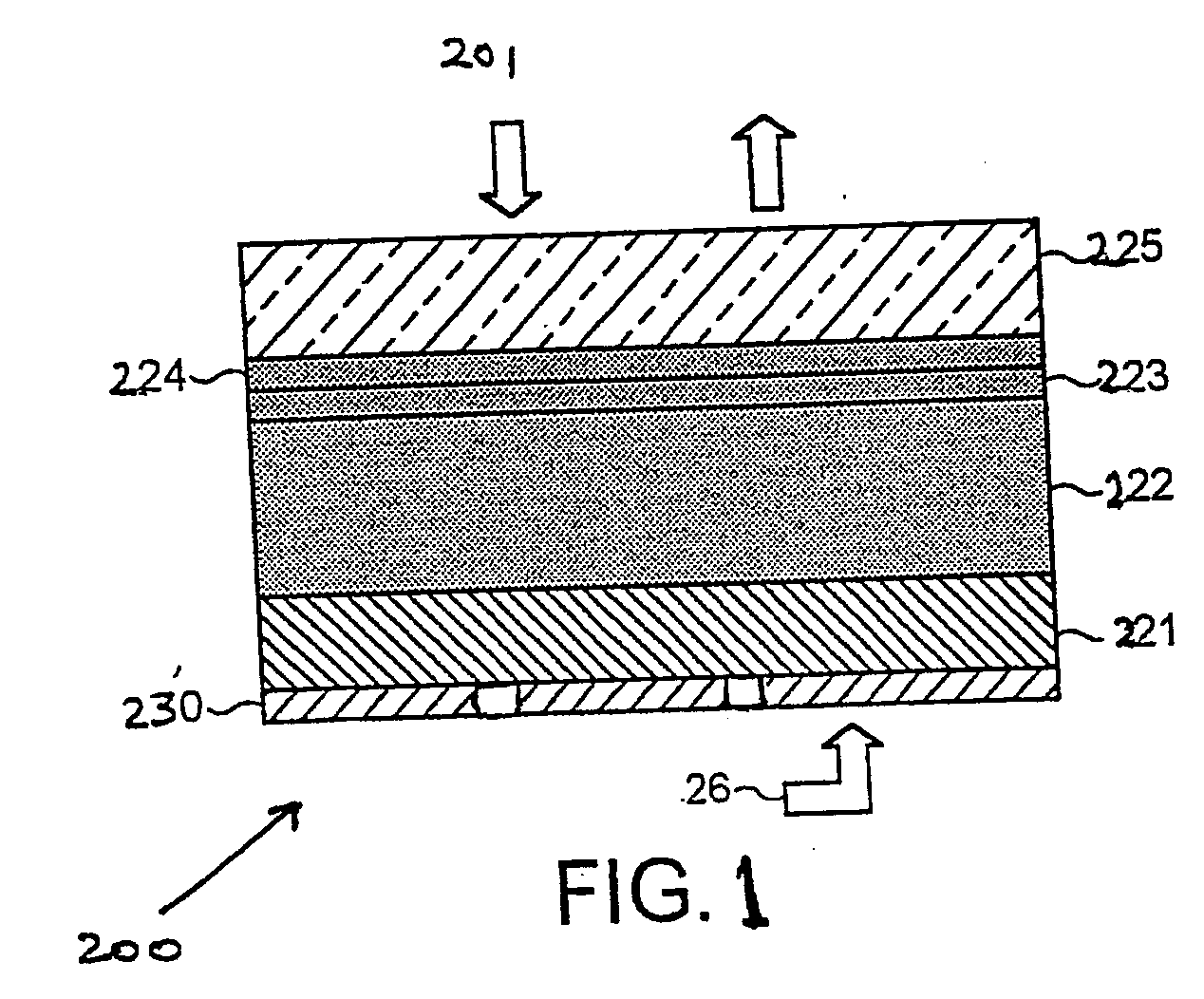Optical processing
a technology of optical devices and optical processing, applied in multiplex communication, manufacturing tools, instruments, etc., can solve the problems of providing different alignment errors, critical source of system failure or insertion loss, and affecting the performance of optical systems, so as to achieve the optimal performance of the system and reduce the error
- Summary
- Abstract
- Description
- Claims
- Application Information
AI Technical Summary
Benefits of technology
Problems solved by technology
Method used
Image
Examples
second embodiment
In a second embodiment a further linear phase modulation is applied to the hologram during each stage so as to deflect the beam to be measured while taking the moments towards a particular photodiode.
Consider a Gaussian type beam b(u,v) centred at position co-ordinates (u0,v0). The even symmetry of the beam about axes parallel to the u and v directions and through the centre lead to the identities given by equations (36) and (37).
∫∫(u−u0)b(u,v)du dv=0 (36)
∫∫(v−v0)b(u,v)du dv=0 (37)
Hence approximate values of the first order moments measured as described previously, or by some other method, may be used to deduce approximate positions for the beam centres, as shown by equations (38) and (39). u0≈a1Ua0(38)v0≈a1Va0(39)
In the next stage of the measurement the pixel block initially assigned to the beam is re-assigned such that it is centred within half a pixel in each of the u and v directions from the approximate centre of the beam, as just calculated.
Let the new centre of the ...
third embodiment
In a third embodiment the input beam could contain one or more signals spread almost continuously across the wavelength range. The light at a particular wavelength will be incident over a small transverse region of the SLM, with, typically a Gaussian type spatial distribution of energy against position. The position of the peak in the spatial distribution is wavelength dependent and may be calculated from the grating and lens properties. For such a system the beam deflection or channel equalisation varies continuously with wavelength. The pixellated SLM is divided into blocks, each characterised by a ‘central wavelength’, defined by the wavelength whose spatial peak lands in the middle of the block. A particular channel equalisation or beam deflection is applied uniformly across this block. Light of a wavelength with a spatial peak landing in between the centres of two blocks will see a system response averaged across the two blocks. As the spatial peak moves towards the centre of o...
PUM
| Property | Measurement | Unit |
|---|---|---|
| Temperature | aaaaa | aaaaa |
| Power | aaaaa | aaaaa |
| Electric potential / voltage | aaaaa | aaaaa |
Abstract
Description
Claims
Application Information
 Login to View More
Login to View More - R&D
- Intellectual Property
- Life Sciences
- Materials
- Tech Scout
- Unparalleled Data Quality
- Higher Quality Content
- 60% Fewer Hallucinations
Browse by: Latest US Patents, China's latest patents, Technical Efficacy Thesaurus, Application Domain, Technology Topic, Popular Technical Reports.
© 2025 PatSnap. All rights reserved.Legal|Privacy policy|Modern Slavery Act Transparency Statement|Sitemap|About US| Contact US: help@patsnap.com



